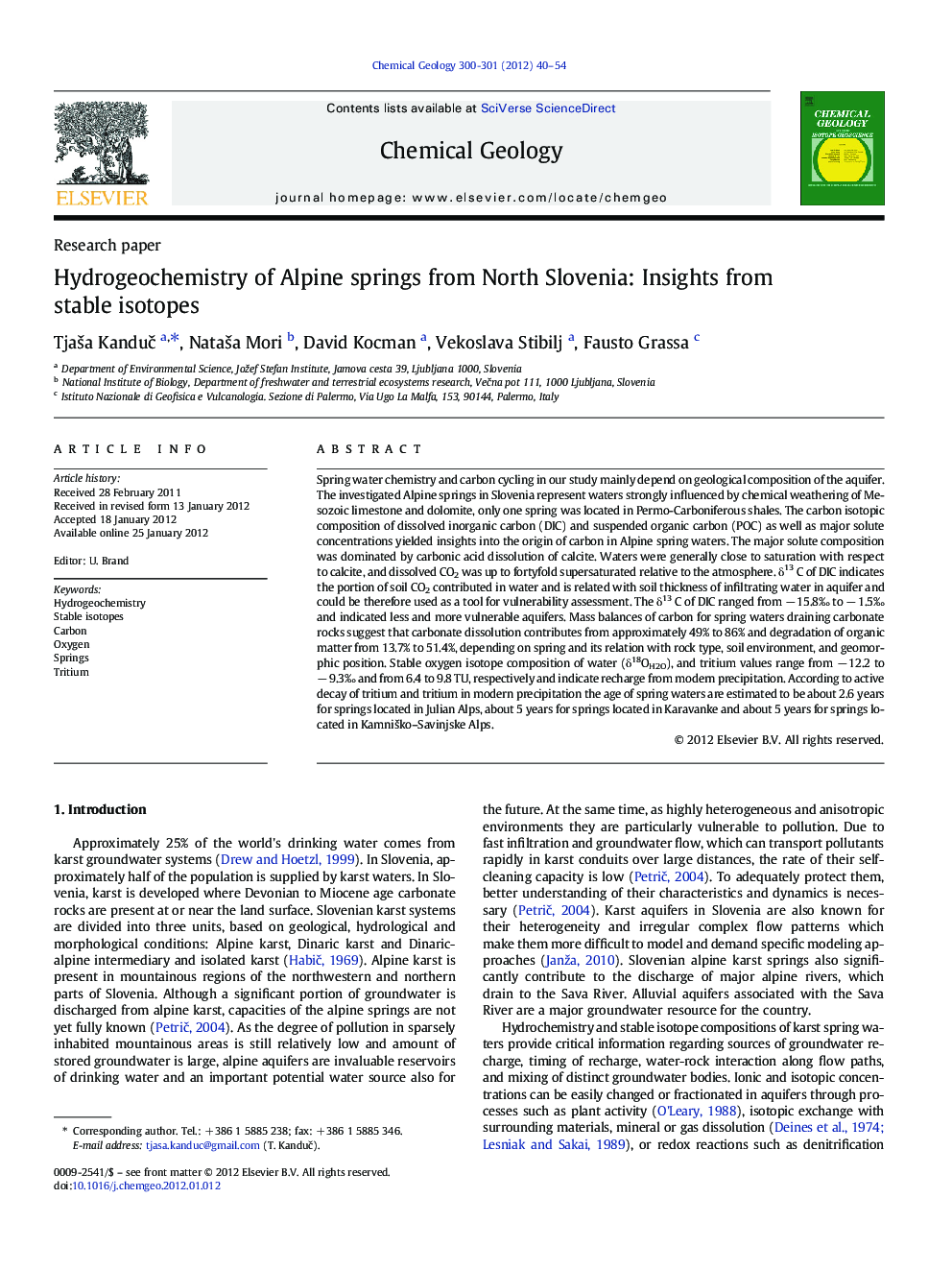| کد مقاله | کد نشریه | سال انتشار | مقاله انگلیسی | نسخه تمام متن |
|---|---|---|---|---|
| 4699478 | 1637650 | 2012 | 15 صفحه PDF | دانلود رایگان |

Spring water chemistry and carbon cycling in our study mainly depend on geological composition of the aquifer. The investigated Alpine springs in Slovenia represent waters strongly influenced by chemical weathering of Mesozoic limestone and dolomite, only one spring was located in Permo-Carboniferous shales. The carbon isotopic composition of dissolved inorganic carbon (DIC) and suspended organic carbon (POC) as well as major solute concentrations yielded insights into the origin of carbon in Alpine spring waters. The major solute composition was dominated by carbonic acid dissolution of calcite. Waters were generally close to saturation with respect to calcite, and dissolved CO2 was up to fortyfold supersaturated relative to the atmosphere. δ13 C of DIC indicates the portion of soil CO2 contributed in water and is related with soil thickness of infiltrating water in aquifer and could be therefore used as a tool for vulnerability assessment. The δ13 C of DIC ranged from − 15.8‰ to − 1.5‰ and indicated less and more vulnerable aquifers. Mass balances of carbon for spring waters draining carbonate rocks suggest that carbonate dissolution contributes from approximately 49% to 86% and degradation of organic matter from 13.7% to 51.4%, depending on spring and its relation with rock type, soil environment, and geomorphic position. Stable oxygen isotope composition of water (δ18OH2O), and tritium values range from − 12.2 to − 9.3‰ and from 6.4 to 9.8 TU, respectively and indicate recharge from modern precipitation. According to active decay of tritium and tritium in modern precipitation the age of spring waters are estimated to be about 2.6 years for springs located in Julian Alps, about 5 years for springs located in Karavanke and about 5 years for springs located in Kamniško–Savinjske Alps.
► In this study we examine water chemistry and carbon cycling of Alpine springs.
► The major solute composition was dominated by dissolution of calcite.
► More negative δ13CDIC values indicated less vulnerable aquifers.
► Isotopic composition of oxygen indicates recharge from precipitation.
► The age of springs was estimated according to tritium up to 5 years.
Journal: Chemical Geology - Volumes 300–301, 18 March 2012, Pages 40–54